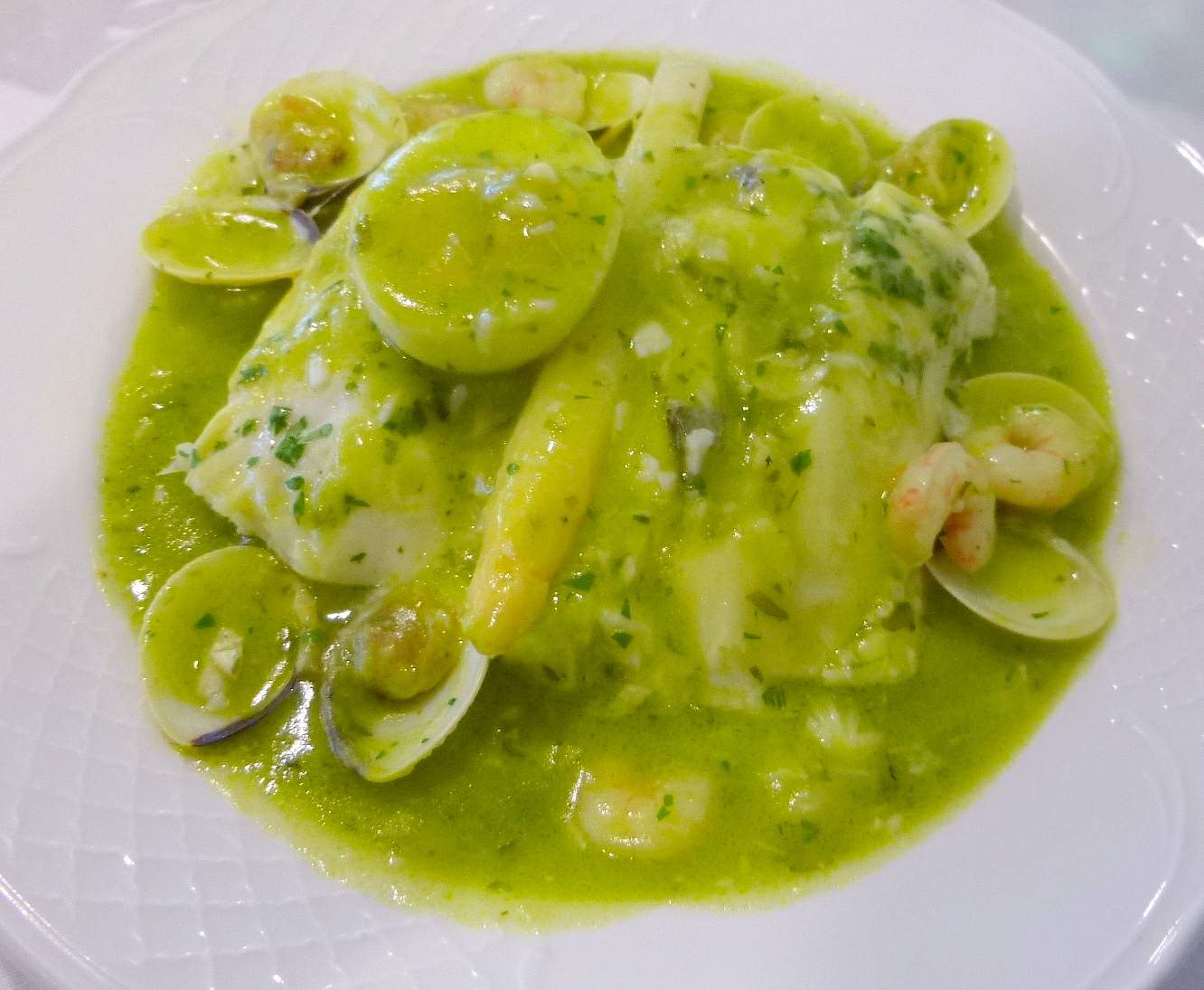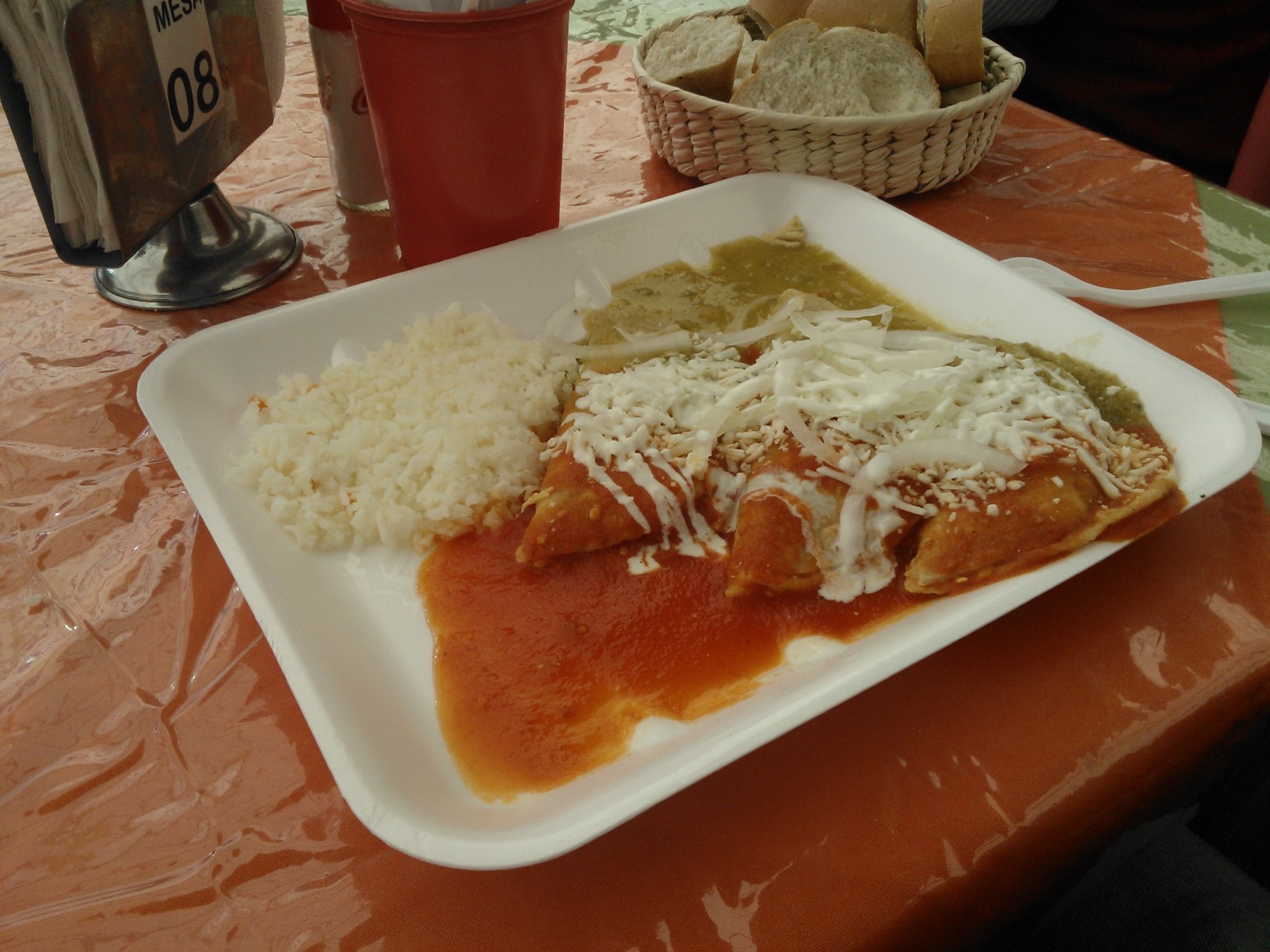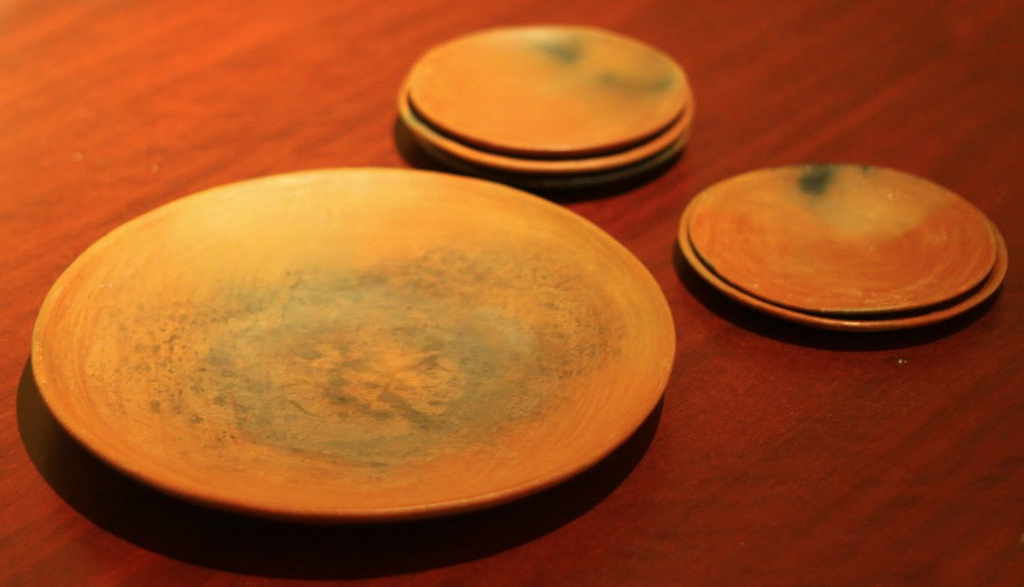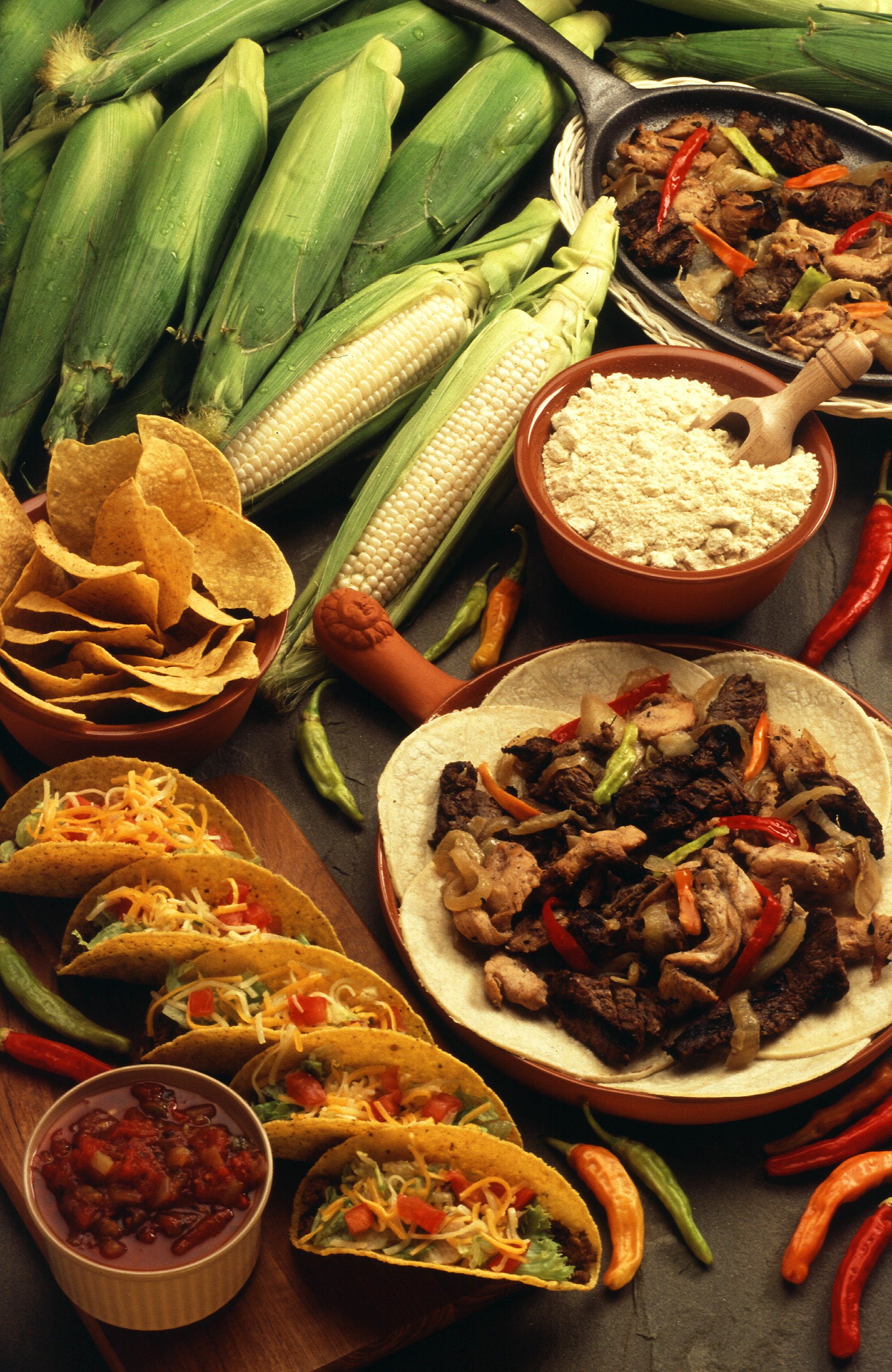|
Salsa Verde
Salsa verde () is a type of spicy, green sauce in Mexican cuisine based on tomatillo and green chili peppers. The tomatillo-based Mexican ''salsa verde'' dates to the Aztec Empire, as documented by the Spanish physician Francisco Hernández, and is distinct from the various medieval European parsley-based green sauces. In the cuisines of Mexico and the Southwestern United States, it is often served with Mexican or Tex-Mex style dishes like enchiladas and chicharrón (pork rinds). The version typical of New Mexico consists mostly of green chile rather than tomatillos. Types This green sauce comes in subtypes: cooked sauce, in which the ingredients are cooked and then ground; roasted salsa, in which the elements are roasted on a and then ground; raw sauce, in which ingredients are ground and eaten without cooking; and a combination in which some of the elements are cooked. A or a blender can be used for the grinding process. Cooking or roasting the tomatillo will enhance the ... [...More Info...] [...Related Items...] OR: [Wikipedia] [Google] [Baidu] |
Green Sauce
Green sauce or greensauce is a family of cold, uncooked sauces based on chopped herbs, including the Spanish and Italian ''salsa verde'', the French ''sauce verte'', the German ''Grüne Soße'' or ''Frankfurter Grie Soß'' (Frankfurt dialect), the British mint sauce and greensauce, and the Argentinian ''chimichurri''. The Mexican ''salsa verde'', though also called a "green sauce", is instead based on tomatillos and is commonly cooked; the New Mexico version uses a green chile base. History Green sauce has a long history in many parts of Europe. It was certainly present in the Middle Ages, and may date to the Classical period. Green sauce made with parsley and often sage was one of the most common sauces of medieval cookery. In a 14th-century recipe, green sauce served with a dish of cheese and whole egg yolks boiled in watered down wine with herbs and spices was recommended for "lords, for settling their temperament and whetting their appetite". The basic recipe is prob ... [...More Info...] [...Related Items...] OR: [Wikipedia] [Google] [Baidu] |
Enchiladas
An enchilada (, ) is a Mexican dish consisting of a corn tortilla rolled around a filling and covered with a savory sauce. Enchiladas can be filled with various ingredients, including meats, cheese, beans, potatoes, vegetables, or combinations. Enchilada sauces include chili-based sauces, such as salsa roja, various moles, tomatillo-based sauces, such as salsa verde, or cheese-based sauces, such as chile con queso. Etymology The Royal Spanish Academy defines the word ''enchilada'', as used in Mexico, as a rolled maize tortilla stuffed with meat and covered with a tomato and chili sauce. ''Enchilada'' is the past participle of Spanish ''enchilar'', "to add chili pepper to"; literally, "to season (or decorate) with chili". The idiomatic American English phrase "the whole enchilada" means "the whole thing". History Enchiladas originated in Mexico, where the practice of rolling tortillas around other food dates back at least to Aztec times. The people living in the lake region ... [...More Info...] [...Related Items...] OR: [Wikipedia] [Google] [Baidu] |
Chili Pepper Dishes
Chili or chilli may refer to: Food * Chili pepper, the spicy fruit of plants in the genus ''Capsicum''; sometimes spelled "chilli" in the UK and "chile" in the southwestern US * Chili powder, the dried, pulverized fruit of one or more varieties of chili pepper * Chili con carne, often referred to simply as "chili", a stew with a chili sauce base * Cincinnati chili, a meat sauce popular in Ohio and Northern Kentucky; different from ''Chili con carne'' * Chili sauce Places China * Zhili, formerly romanized as Chili, a former Chinese province United States * Chili, Indiana, an unincorporated town * Chili, New Mexico, an unincorporated census-designated place * Chili, New York, a suburb of Rochester * Chili, Ohio, an unincorporated community * Chili, Wisconsin, an unincorporated census-designated place * Chili Gulch (also spelled ''Chile Gulch''), a gulch in Calaveras County, California * Chili Township, Hancock County, Illinois ** Chili, Illinois, an unincorporated community Peo ... [...More Info...] [...Related Items...] OR: [Wikipedia] [Google] [Baidu] |
Pipián (sauce)
Pipián is a sauce from Mexican cuisine made with puréed greens and thickened with ground pumpkin seeds. The sauce is said to have origins in the ancient Aztec and Mayan cuisines. The greens used to make the sauce include tomatillos and peppers like poblano, serrano and jalapeño. It can be served with carnitas, and roasted poultry or vegetables, or served as an enchilada sauce. It is sometimes added to rice and beans to enhance flavor or worked into dough to make spicy tamales. Other ingredients used for the sauce are sesame seeds, ancho chile, peanut The peanut (''Arachis hypogaea''), also known as the groundnut, goober (US), pindar (US) or monkey nut (UK), is a legume crop grown mainly for its edible seeds. It is widely grown in the tropics and subtropics, important to both small and ...s and spices like cinnamon, cumin and garlic. References Squash and pumpkin dishes Ancient dishes Mexican sauces {{Mexico-cuisine-stub ... [...More Info...] [...Related Items...] OR: [Wikipedia] [Google] [Baidu] |
Salsa Roja
Salsa roja () is a type of spicy red sauce in Mexican cuisine. It is made of jitomate (red tomato), ground with onion, garlic, chilli, salt and pepper to taste. This red sauce comes in subtypes: ''salsa cocida'' ("cooked sauce"), in which the ingredients are cooked (e.g. by stewing) and then ground; ''salsa asada'' ("roasted sauce"), in which the elements are roasted on a comal and then ground; ''salsa cruda'' ("raw sauce"), in which ingredients are ground raw, ready to eat; and a combination in which some elements are roasted and other cooked. A molcajete or a blender can be used for the grinding process. After the sauce is prepared, it can be cooked again in a pan with little oil. It is used to prepare traditional Mexican foods, in a mild spicy level for enchiladas and huevos rancheros, or spicier for antojitos such as tacos and quesadillas. See also * Chili sauce * Salsa verde * Pico de gallo * List of sauces The following is a list of notable culinary and prepared sa ... [...More Info...] [...Related Items...] OR: [Wikipedia] [Google] [Baidu] |
Molcajete
A ''molcajete'' (; Mexican Spanish, from Nahuatl ''molcaxitl'') and ''tejolote'' are stone tools, the traditional Mexican version of the mortar and pestle, similar to the South American batan, used for grinding various food products. Description The ''molcajete'' was used by pre-Hispanic Mesoamerican cultures, including the Aztec and Maya, stretching back several thousand years. Traditionally carved out of a single block of vesicular basalt, ''molcajetes'' are typically round in shape and supported by three short legs. They are frequently decorated with the carved head of an animal on the outside edge of the bowl, giving the ''molcajete'' the appearance of a short, stout, three-legged animal. The pig is the most common animal head used for decoration of this type. In the pre-Hispanic Mesoamerican period, the ''molcajete'' had a lid and the set was believed to be used for burial of members in society of high status. Additionally, throughout the pre-Hispanic Mesoamerican perio ... [...More Info...] [...Related Items...] OR: [Wikipedia] [Google] [Baidu] |
Comal (cookware)
A comal is a smooth, flat griddle typically used in Mexico, Central America, and parts of South America, to cook tortillas and arepas, toast spices and nuts, sear meat, and generally prepare food. Similar cookware is called a budare in South America. Some comals are concave and made of ''barro'' (clay). These are still made and used by the indigenous peoples of Mexico and Central America. Comals are similar to the American griddle or the Indian tawa, and are often used and named interchangeably with these. Comals for home use are generally made from heavy cast iron, and sized to fit over either one burner on the stovetop (round) or two burners front to back (elongated oval). In many indigenous and pre-Hispanic cultures, the comal is handed down from grandmother to mother to daughter, the idea being that a comal tempered over many years of usage will heat faster and cook cleaner. History The history of such cooking methods dates back to the pre-Columbian era, when powdered-homin ... [...More Info...] [...Related Items...] OR: [Wikipedia] [Google] [Baidu] |
New Mexico Chile
New Mexico chile or New Mexican chile (Scientific name: ''Capsicum annuum'' 'New Mexico Group'; es, chile de Nuevo México, ) is a cultivar group of the chile pepper from the US state of New Mexico, first grown by Pueblo and Hispano communities throughout Santa Fe de Nuevo México. These landrace (a domesticated, local variety) chile plants were used to develop the modern New Mexico chile peppers by horticulturist Dr. Fabián García and his students, including Dr. Roy Nakayama, at what is now New Mexico State University in 1894. New Mexico chile, which typically grows from a green to a ripened red, is popular in the cuisines of the Southwestern United States, including Sonoran and Arizonan cuisine, and an integral staple of New Mexican cuisine. It is also sometimes featured in the broader Mexican cuisine. Chile is one of New Mexico's state vegetables, and is referenced in the New Mexico state question "Red or Green?". Hatch chile is a label for New Mexico chile grown in the ... [...More Info...] [...Related Items...] OR: [Wikipedia] [Google] [Baidu] |
New Mexican Cuisine
New Mexican cuisine is the cuisine of the Southwestern US state of New Mexico. The region is primarily known for its fusion of Pueblo Native American cuisine with Hispano Spanish and Mexican cuisine originating in Nuevo México. This cuisine had adaptations and influences throughout its history, including early on from the nearby Apache, Navajo, and throughout New Spain and the Spanish Empire, also from French, Italian, Portuguese, and other Mediterranean cuisine, along with early European bed and breakfasts and cafés, furthermore during the American territorial phase from cowboy chuckwagons and Western saloons, additionally after statehood from Route 66 American diner, Mexican-American cuisine, fast food restaurants, and global cuisine. Even so, New Mexican cuisine developed in fairly isolated circumstances, which has allowed it to maintain its indigenous, Spanish, Mexican and Latin identity, and is therefore not like any other Latin food originating in the contiguous U ... [...More Info...] [...Related Items...] OR: [Wikipedia] [Google] [Baidu] |
Chicharrón
(, , plural ; pt, torresmo ; fil, chicharon; ch, chachalon) is a dish generally consisting of fried pork belly or fried pork rinds. may also be made from chicken, mutton or beef. Name , as a dish with sauce, or as finger-food snacks, are popular in Andalusia and Canarias in Spain, Latin America and other places with Spanish influence including the Southwestern United States. It is part of the traditional cuisines of Bolivia, Brazil, Portugal (where it is called ), Chile, Colombia, Costa Rica, Cuba, the Dominican Republic, Ecuador, Guam, Guatemala, Haiti, Honduras, El Salvador, Mexico, Nicaragua, Panama, Peru, the Philippines, Puerto Rico, Venezuela, Belize and others. The singular form of the term or a variant of it is also used as a mass noun in Filipino and Tagalog, in which stand-alone plurals do not exist. are usually made from various cuts of pork but sometimes with mutton, chicken or other meats. In some places they are made from pork ribs with skin attac ... [...More Info...] [...Related Items...] OR: [Wikipedia] [Google] [Baidu] |
Tex-Mex
Tex-Mex cuisine (from the words ''Texan'' and ''Mexican'') is an American cuisine, American cuisine that derives from the culinary creations of the Tejanos, ''Tejano'' people of Texas. It has spread from border states such as Texas and others in the Southwestern United States to the rest of the country. Tex-Mex is most popular in Texas and neighboring areas, especially nearby states in both the US and Mexico. It is a subtype of Cuisine of the Southwestern United States, Southwestern cuisine found in the American Southwest. Common dishes Some ingredients in Tex-Mex cuisine are also common in Mexican cuisine, but others not often used in Mexico are often added. Tex-Mex cuisine is characterized by its heavy use of shredded cheese, beans, meat (particularly Chicken as food, chicken, beef, and pork), chili peppers, and spices, in addition to flour tortilla, ''tortillas''. Sometimes various Tex-Mex dishes are made without the use of a ''tortilla''. A common example of this is th ... [...More Info...] [...Related Items...] OR: [Wikipedia] [Google] [Baidu] |
Tomatillo
The tomatillo (''Physalis philadelphica'' and ''Physalis ixocarpa''), also known as the Mexican husk tomato, is a plant of the nightshade family bearing small, spherical, and green or green-purple fruit of the same name. Tomatillos originated in Mexico and were cultivated in the pre-Columbian era. A staple of Mexican cuisine, they are eaten raw and cooked in a variety of dishes, particularly salsa verde. The tomatillo is a perennial plant but is generally grown for agriculture each year as if it were an annual. Names The tomatillo (from Nahuatl, ') is also known as husk tomato, Mexican groundcherry, large-flowered tomatillo, or Mexican husk tomato. Some of these names, however, can also refer to other species in the genus ''Physalis''. Other names are Mexican green tomato and miltomate. In Spanish, it is called ''tomate de cáscara'' (husk tomato), ''tomate de fresadilla'' (little strawberry tomato), ''tomate milpero'' (field tomato), ''tomate verde'' (green tomato), ''toma ... [...More Info...] [...Related Items...] OR: [Wikipedia] [Google] [Baidu] |







